We have calculated an extensive grid of abundance corrections across dwarf, subgiant and giant stars from solar to metal-poor metalicities for Ba II lines at 4554.0, 4934.1, 5853.7, 6141.7, and 6496.9 Ångstrom, Sr I line 4215.5 Ångstrom, and Sr II lines 4077.7, and 4215.5 Ångstrom.
The attainment of the most accurate and robust chemical abundances of elements inside stellar atmospheres has been a major goal of stellar astrophysics and spectroscopy for many decades. Understanding how they vary across populations of stars across the Galaxy allow us to infer boundary conditions around the chemical evolution of the Galaxy. As more robust abundances are computed, the better constrained these boundary conditions become. For some applications, the accuracy of chemical abundance determinations must be better than 0.1 dex to be able to distinguish between competing theoretical models.
The only practical method for determining elemental abundances in stellar atmospheres is through spectroscopy. To do this, besides of obtaining spectra with sufficient resolution and signal-to-noise ratios, one must generate model stellar atmospheres with temperatures, surface gravities and chemical compositions matching the star(s) of interest. These models are used as input in post-processing radiative transfer calculations to generate synthetic spectra. The abundance of the chemical element in question is adjusted until the synthetic spectra match the observed spectrum of the star(s).
Classically, this involved a limitation in the physical assumptions of the gas properties known as local thermodynamic equilibrium (LTE); the behaviors of atoms in the gas are then determined only by its local temperature and pressure. While this is a very good assumption in hot and dense gas, such as the gas in the deep regions of the lower photosphere, this assumption often breaks down in the more tenuous upper regions of stellar atmospheres, where spectral lines typically form. Therefore, more detailed computations are needed to determine more reliable abundances of elements in a stellar atmosphere. This so-called non-local thermodynamic equilibrium (NLTE) technique requires the solution of a coupled system of statistical equilibrium equations. Naturally, NLTE computations are far more complex than they are in LTE, and as such they require more powerful computers and/or much more compute time to complete. It is therefore more beneficial to provide the scientific community with a series of abundance corrections (the difference between LTE and NLTE abundance) that they can apply to their own LTE abundance work, rather than compute bespoke NLTE abundances for every specific problem that needs to be addressed. Crucially, the obtained abundance corrections are frequently large enough to imply significant changes in our understanding of chemical evolution of the Galaxy.
Scientific relation to ChETEC-INFRA
This application addresses one of the science goals of Work Package 5, Task 5.1 of the ChETEC-INFRA project. Specifically, the production of abundance corrections for various elements on the periodic table for a range of stellar parameters. The details of Task 5.1 can be found in the work package description of the original ChETEC-INFRA proposal. This application concerns the first part of the process to produce these abundance corrections; the computation of population departure coefficients in the atomic structure of atoms. We choose barium as the first element to be investigated.
Astronuclear Abundances (JRA3 / WP5)
This activity pursues the development of new tools for advanced stellar abundance analysis based on state-of-the-art stellar model atmospheres and abundance analysis methodologies. It will provide a pipeline that can serve as a starting point for homogeneous abundance analyses of stars used to constrain the chemical evolution of the Galaxy, and web-based interfaces to enable open access to these data products and tools.
ChETEC-INFRA
Nuclear astrophysics studies the origin of the chemical elements: from the Big Bang, to stellar burning, and to neutron star mergers. ChETEC-INFRA networks the three types of infrastructures that, together, provide the capabilities needed for this quest: astronuclear laboratories supply reaction data, supercomputer facilities perform stellar structure and nucleosynthesis computations, and telescopes and mass spectrometers collect elemental and isotopic abundance data. – About ChETEC-INFRA.
